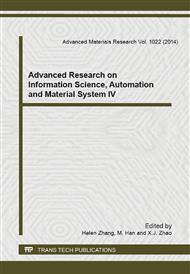p.277
p.282
p.286
p.292
p.296
p.300
p.304
p.311
p.316
Experimental Study of Information Processing Application in Second Language to Computer Interface of Brain
Abstract:
The computer how to identify the language How the brain controls the brain computer interface (BCI) equipment Reading in a second language (L2) is a complex task that entails an interaction between L2 and the native language (L1). Previous studies have suggested that bilingual subjects recruit the neural system of their logographic L1 (Chinese) reading and apply it to alphabetic L2 (English) reading. In this study, we used functional magnetic resonance imaging (fMRI) to visualize Japanese-Chinese bilinguals’ brain activity in phonological processing of Japanese Kanji (L1) and Chinese characters (L2) and application to BCI, two written languages with highly similar orthography. In the experiment, the subjects were asked to judge whether two Japanese Kanji (or Chinese characters) presented at the left and right side of the fixation point rhymed with each other. A font size decision task was used as a control task, where the subjects judged whether the two Japanese Kanji (or Chinese characters) had an identical physical size. Subjects indicated a positive response by pressing the key corresponding to the index finger and a negative response by pressing the key corresponding to the middle finger of their right hand. The result showed that our bilingual Japanese subjects have large overlaps in the neural substrates for phonological processing of both native and second language. Our results are application to brain computer interface.
Info:
Periodical:
Pages:
296-299
Citation:
Online since:
August 2014
Authors:
Price:
Сopyright:
© 2014 Trans Tech Publications Ltd. All Rights Reserved
Share:
Citation:


